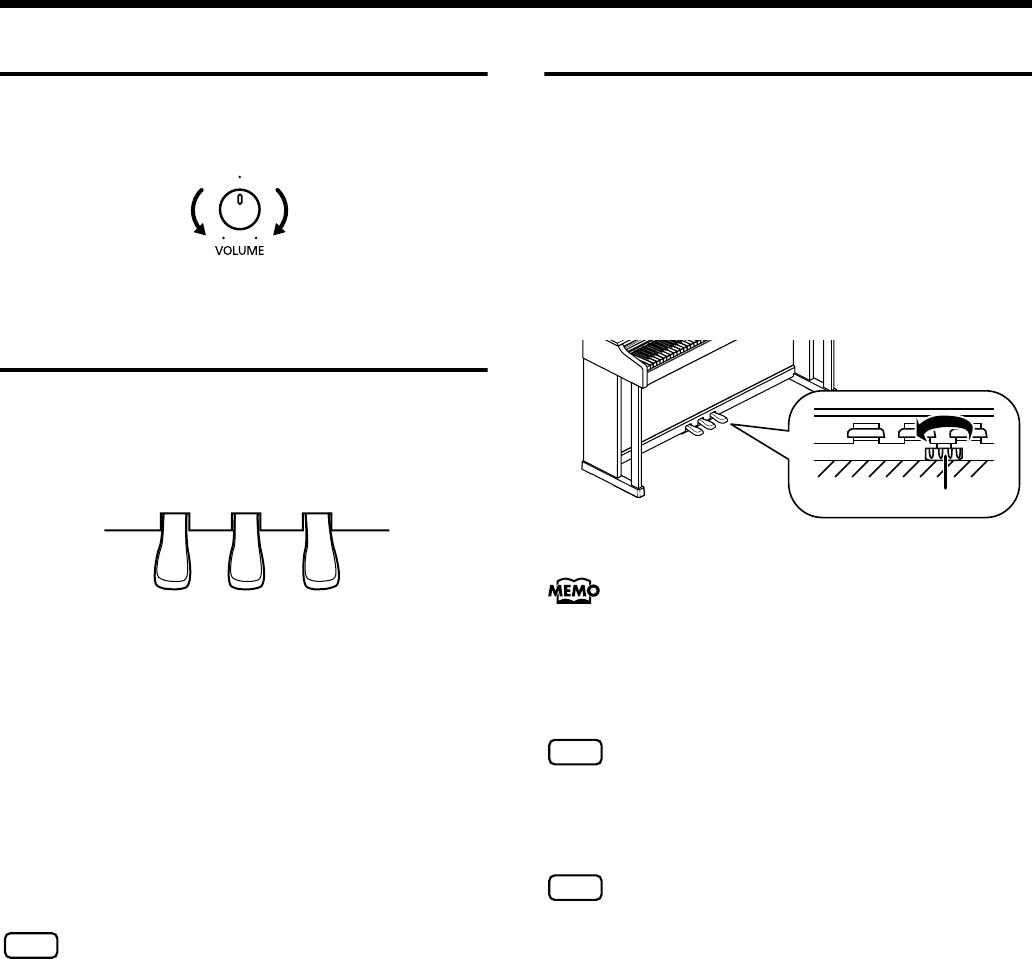
14
Before You Start Playing
Adjusting the Sound’s Volume
1.
Turn the [VOLUME] knob to adjust the overall
volume.
fig.00-07.e
About the Pedals
The pedals perform the following operations. You’ll use them
mainly when playing piano.
Damper Pedal (right pedal)
While this pedal is held down, notes will be sustained for an
extended time even if you release your fingers from the
keyboard.
On an acoustic piano, holding down the damper pedal will
cause the strings for notes other than the ones you actually
play to vibrate in sympathy with what you’ve played,
producing a rich resonance. The HP201 simulates this
sympathetic vibration (damper resonance).
NOTE
You can change the amount of resonance applied with
the damper pedal. Refer to “Changing the Damper
Pedal’s Resonance (Damper Resonance)” (p. 34).
Sostenuto Pedal (center pedal)
The notes you are pressing when this pedal is depressed will
be sustained.
Soft Pedal (left pedal)
This pedal is used to make the sound softer.
About the Adjuster
If you feel that the pedal is unstable (for example if you’ve
moved the HP201 to a different location), you can adjust the
adjuster located on the bottom of the pedals as follows.
• Turn the adjuster to lower it until the adjuster is in firm
contact with the floor. The pedal may be damaged if there
is a gap between the adjuster and the floor. In particular,
when you’ve placed the HP201 on carpet, you must turn
the adjuster until it is pressing firmly against the floor.
If the adjuster is difficult to turn, have one person lift either
the left or right side of the stand to make it easier for
another person to turn the adjuster and make the
adjustment.
NOTE
After adjusting the adjuster, press the pedals, and if the
front board moves, turn the adjuster further so that it
makes firm contact with the floor.
NOTE
Always readjust the adjuster after moving the piano.
The volume
decreases
The volume
increases
Soft Pedal
Sostenuto Pedal
Damper Pedal
Adjuster
HP201_e.book 14 ページ 2007年1月15日 月曜日 午後5時37分


















